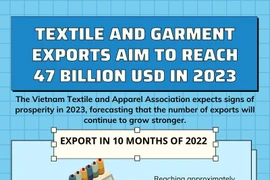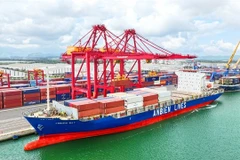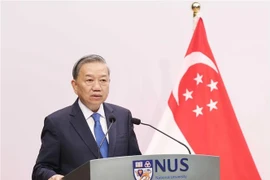The Vietnam National Textile and GarmentGroup (Vinatex) said though forecasts had been made early, its members werestill surprised at unpredictable changes in 2022 such as the Russia - Ukraineconflict and surges in oil prices, inflation, and interest rates, which have caused demand to nose-dive in importing markets.
Yet Vinatex estimatedits 2022 consolidated revenue at over 19.53 trillion VND (826.84 million USD),up 15% from last year and 8% higher than the target, and consolidated profit atmore than 1 trillion VND, up 14.6% from the target. These figures are assessedas encouraging amid numerous market difficulties.
Pointing out three scenarios, VinatexPresident Le Tien Truong said in the best-case one – the global economy willhave become stable and geopolitical conflicts been over by the end of thesecond quarter - exports next year may go up 4 - 5% from 2022.
In the middle-case scenario – instabilitieswill linger on, inflation remain, and interest rates still increase until Q3 - exports may stay unchanged compared to this year. And in the worst-case one where the worldeconomy will enter a recession, the 2023 revenue may be about 5% lower than that of thisyear.
Meanwhile, the Vietnam Textile andApparel Association (VITAS) has forecast its export revenue this year is likely tostand at nearly 44.5 billion USD, up 10% from 2021.
For 2023, textile and garment exportsmay reach 47 - 48 billion USD in the positive scenario and 45 - 46 billion USDin the lower-case scenario, VITAS noted, adding that how enterprises adapt tochanges in markets will affect their growth in any circumstance.
In the positive scenario – instabilitiesin the global market will be brought under control, all activities of thesector may have recovered by the end of next year’s Q1. In such case, 48billion USD in revenue is achievable.
However, VITAS President Vu Duc Giangsaid, in the second scenario under which the global market will recover in the latterhalf of 2023, export turnover may reach 45 billion USD.
In the current context, wheninternational markets do not place long-term textile and garment orders, businessescan switch to producing lower-value items. In 2022, as they have started to diversifymarkets and products, growth is still sustained.
In any scenario, textile and garment marketswill be unable to bounce back at least in the first half of 2023.
However, experts held that there arestill certain bright spots next year, noting the COVID-19 pandemic is being putunder control, the world getting used to a new normal, the Asia-Pacificpredicted to be the fastest-growing region in 2023, China easing the zero-COVIDpolicy, and logistics costs showing signs of declining./.






























